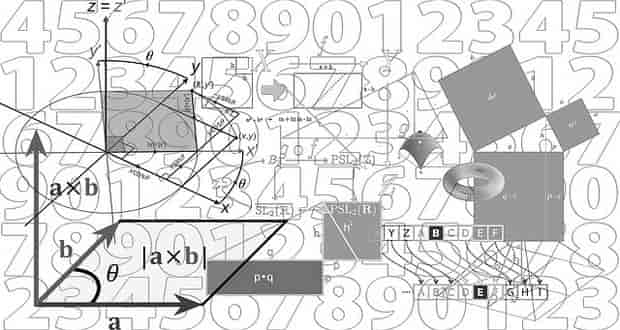HALF-PLANE IMPEDANCE HELMHOLTZ PROBLEM
In this chapter we study the perturbed half-plane impedance Helmholtz problem using integral equation techniques and the boundary element method. We consider the problem of the Helmholtz equation in two dimensions on a compactly perturbed half-plane with an impedance boundary condition. The perturbed half-plane impedance Helmholtz problem is a wave scattering problem around the bounded perturbation, which is contained in the upper half-plane. In acoustic scattering the impedance boundary-value problem appears when we suppose that the normal velocity is proportional to the excess pressure on the boundary of the impenetrable perturbation or obstacle (vid. Section A.11). The special case of frequency zero for the volume waves has been treated already in Chapter II. The three-dimensional case is considered in Chapter V, whereas the full-plane impedance Helmholtz problem with a bounded impenetrable obstacle is treated thoroughly in Appendix C. The main application of the problem corresponds to outdoor sound propagation, but it is also used to describe the propagation of radio waves above the ground and of water waves in shallow waters near the coast (harbor oscillations). The problem was at first considered by Sommerfeld (1909) to describe the long-distance propagation of electromagnetic waves above the earth. Different results for the electromagnetic problem were then obtained by Weyl (1919) and later again by Sommerfeld (1926). After the articles of Van der Pol & Niessen (1930), Wise (1931), and Van der Pol (1935), the most useful results up to that time were generated by Norton (1936, 1937). We can likewise mention the later works of Banos & Wesley (1953, 1954) and Ba ˜ nos (1966). The application of the problem to out- ˜ door sound propagation was initiated by Rudnick (1947). Other approximate solutions to the problem were thereafter found by Lawhead & Rudnick (1951a,b) and Ingard (1951). Solutions containing surface-wave terms were obtained by Wenzel (1974) and Chien & Soroka (1975, 1980). Further references are listed in Nobile & Hayek (1985). Other articles that attempt to solve the problem are Briquet & Filippi (1977), Attenborough, Hayek & Lawther (1980), Filippi (1983), Li et al. (1994), and Attenborough (2002), and more recently also Habault (1999), Ochmann (2004), and Ochmann & Brick (2008), among others. For the two-dimensional case, in particular, we mention the articles of Chandler-Wilde & Hothersall (1995a,b) and Granat, Tahar & Ha-Duong (1999). The problem can be also found in the books of Greenberg (1971) and DeSanto (1992). The physical aspects of outdoor sound propagation can be found in Morse & Ingard (1961) and Embleton (1996). For the propagation of water waves in shallow waters near the coast (harbor oscillations) we cite the articles of Hsiao, Lin & Fang (2001) and Liu & Losada (2002), and the book of Mei, Stiassnie & Yue (2005). The Helmholtz equation allows the propagation of volume waves inside the considered domain, and when it is supplied with an impedance boundary condition, then it allows also the propagation of surface waves along the boundary of the perturbed half-plane. The main difficulty in the numerical treatment and resolution of our problem is the fact that the exterior domain is unbounded. We solve it therefore with integral equation techniques and a boundary element method, which require the knowledge of the associated Green’s function. This Green’s function is computed using a Fourier transform and taking into account the limiting absorption principle, following Duran, Muga & N ´ ed´ elec (2005 ´ a, 2006) and Duran, ´ Hein & Ned´ elec (2007 ´ a,b), but here an explicit expression is found for it in terms of a finite combination of elementary functions, special functions, and their primitives. This chapter is structured in 13 sections, including this introduction. The direct scattering problem of the Helmholtz equation in a two-dimensional compactly perturbed halfplane with an impedance boundary condition is presented in Section 3.2. The computation of the Green’s function, its far field, and its numerical evaluation are developed respectively in Sections 3.3, 3.4, and 3.5. The use of integral equation techniques to solve the direct scattering problem is discussed in Section 3.6. These techniques allow also to represent the far field of the solution, as shown in Section 3.7. The appropriate function spaces and some existence and uniqueness results for the solution of the problem are presented in Section 3.8. The dissipative problem is studied in Section 3.9. By means of the variational formulation developed in Section 3.10, the obtained integral equation is discretized using the boundary element method, which is described in Section 3.11. The boundary element calculations required to build the matrix of the linear system resulting from the numerical discretization are explained in Section 3.12. Finally, in Section 3.13 a benchmark problem based on an exterior half-circle problem is solved numerically
Direct scattering problem
Problem definition
We consider the direct scattering problem of linear time-harmonic acoustic waves on a perturbed half-plane Ωe ⊂ R 2 +, where R 2 + = {(x1, x2) ∈ R 2 : x2 > 0}, where the incident field uI and the reflected field uR are known, and where the time convention e −iωt is taken. The goal is to find the scattered field u as a solution to the Helmholtz equation in the exterior open and connected domain Ωe, satisfying an outgoing radiation condition, and such that the total field uT , decomposed as uT = uI +uR +u, satisfies a homogeneous impedance boundary condition on the regular boundary Γ = Γp ∪ Γ∞ (e.g., of class C 2 ). The exterior domain Ωe is composed by the half-plane R 2 + with a compact perturbation near the origin that is contained in R 2 +, as shown in Figure 3.1. The perturbed boundary is denoted by Γp, while Γ∞ denotes the remaining unperturbed boundary of R 2 +, which extends towards infinity on both sides. The unit normal n is taken outwardly oriented of Ωe and the complementary domain is denoted by Ωc = R 2 \ Ωe. A given wave number k > 0 is considered, which depends on the pulsation ω and the speed of wave propagation c through the ratio k = ω/c.
Incident and reflected field
To determine the incident field uI and the reflected field uR, we study the solutions uT of the unperturbed and homogeneous wave propagation problem with neither a scattered field nor an associated radiation condition, being uT = uI +uR. The solutions are searched in particular to be physically admissible, i.e., solutions which do not explode exponentially in the propagation domain, depicted in Figure 3.1. We analyze thus the half-plane impedance Helmholtz problem
Green’s function
Problem definition
The Green’s function represents the response of the unperturbed system to a Dirac mass. It corresponds to a function G, which depends on the wave number k, on the impedance Z∞, on a fixed source point x ∈ R 2 +, and on an observation point y ∈ R 2 +. The Green’s function is computed in the sense of distributions for the variable y in the half-plane R 2 + by placing at the right-hand side of the Helmholtz equation a Dirac mass δx, centered at the point x. It is therefore a solution for the radiation problem of a point source,
Special cases
When the Green’s function problem (3.20) is solved using either homogeneous Dirichlet or Neumann boundary conditions, then its solution is found straightforwardly using the method of images (cf., e.g., Morse & Feshbach 1953).
Homogeneous Dirichlet boundary condition We consider in the problem (3.20) the particular case of a homogeneous Dirichlet boundary condition, namely G(x, y) = 0, y ∈ {y2 = 0}, (3.22) which corresponds to the limit case when the impedance is infinite (Z∞ = ∞). In this case, the Green’s function G can be explicitly calculated using the method of images, since it has to be antisymmetric with respect to the axis {y2 = 0}. An additional image source point x¯ = (x1, −x2), located on the lower half-plane and associated with a negative Dirac mass, is placed for this purpose just opposite to the upper half-plane’s source point x = (x1, x2). The desired solution is then obtained by evaluating the full-plane Green’s function (C.23) for each Dirac mass
Spectral Green’s function
Boundary-value problem To solve (3.20) in the general case, we use a modified partial Fourier transform on the horizontal y1-axis, taking advantage of the fact that there is no horizontal variation in the geometry of the problem. To obtain the corresponding spectral Green’s function, we follow the same procedure as the one performed in Duran et al. (2005 ´ a). We define the forward Fourier transform of a function F


